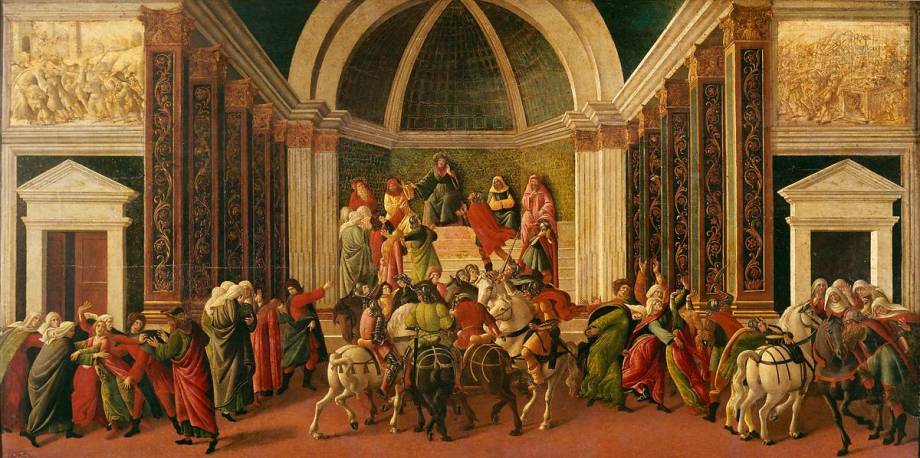Shop art print and framed art The Story of Virginia by Sandro Botticelli
Subjects : Religion
Keywords : 15th century, Renaissance, crowd, horse, man, stairs, throne, woman
(Ref : 36909) © RMN /Agence Bulloz
Customise
Your art print
The Story of Virginia OF Sandro Botticelli

The artwork
The Story of Virginia
The History of Roman Virginia (Italian: Storia di Virginia Romana) is a tempera painting on wood (83 × 165 cm) executed around 1498 by Sandro Botticelli and kept at the Accademia Carrara in Bergamo.
The painting is a 'counterpart' to The Tragedy of Lucretia, which is kept at the Isabella Stewart Gardner Museum in Boston as part of a group of paintings called The Stories of Virginia and Lucretia.
The two panels were part of a back and footboard mounted opposite each other, documented around 1500 in the Casa Vespucci, now the Palazzo Incontri, on the corner of via dei Servi and via dei Pucci in Florence.
When Giovanni Morelli bought the painting in Rome in 1871, it was described as "Cavaliers and a rape of nuns." Morelli associated the work with a description in Giorgio Vasari's edition of Le Vite (1550 version): "many very lively and beautiful paintings with several figures by Botticelli, framed in a spalliera in a room in Giovanni Vespucci's palace in Florence."
The theme of Virginia directly echoes that of Lucretia, borrowed like it from Roman history: in both cases, a young girl dies to preserve her chastity (Lucretia), or her virginity (Virginia). Lucretia commits suicide after being raped"; Virginie is stabbed to death by her own father, who decides to commit infanticide rather than let her be dishonoured by a tyrant and his henchmen".
Virginia's story is said to have taken place around 450 BC, about fifty years after Lucretius', during the dark period of the Decemvirs. [...]
This artwork is a painting from the renaissance period. It belongs to the italian renaissance style.
« The Story of Virginia » is kept at Galleria dell' Accademia Carrara, Bergamo, Italy.
Find the full description of The Story of Virginia by Sandro Botticelli on Wikipedia.
You may also like
The Réserve Muzéo I take advantage of it
- 30% !
Make good deals by browsing our Reserve : editions of our catalog which await their purchaser at a low price.























